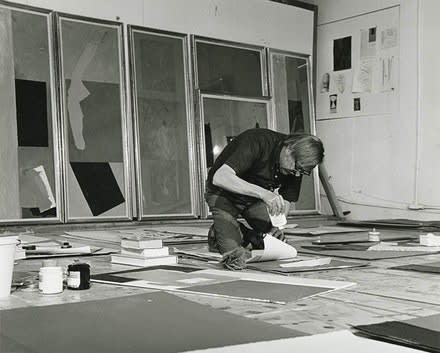"Wherever art appears, life disappears."
-Robert Motherwell
Career
In 1940, Motherwell moved to New York to study at Columbia University, where he was encouraged by Meyer Schapiro to devote himself to painting rather than scholarship. Schapiro later introduced the young artist to a group of exiled Parisian Surrealists (Max Ernst, Duchamp, Masson); the time that Motherwell spent with the Surrealists proved to be influential to his artistic process. After a 1941 voyage with Roberto Matta to Mexico—on a boat where he met Maria Emilia Ferreira y Moyeros, an actress and his future wife—Motherwell decided to make painting his primary vocation. Matta introduced Motherwell to the concept of "automatic" drawing or automatism, which the Surrealists used to tap into their unconscious; the concept had a lasting effect on Motherwell.
Upon his return from Mexico, Motherwell spent time developing his creative principle based on automatism. Thus, in the early 1940s, Robert Motherwell played a significant role in laying the foundations for the new movement of abstract expressionism (or the New York School). In 1942, Motherwell began to exhibit his work in New York and, in 1944, he had his first one-man show at Peggy Guggenheim's "Art of This Century" gallery; that same year the MoMA was the first museum to purchase one of his works. From the mid-1940s, Motherwell became the leading spokesman for avant-garde art in America. His circle came to include William Baziotes, David Hare, Barnett Newman, and Mark Rothko, with whom he eventually started the Subjects of the Artist School (1948–1949). Throughout the 1950s, Motherwell also taught painting at Hunter College in New York and at Black Mountain College in North Carolina. Cy Twombly, Robert Rauschenberg and Kenneth Noland studied under and were influenced by Motherwell.
